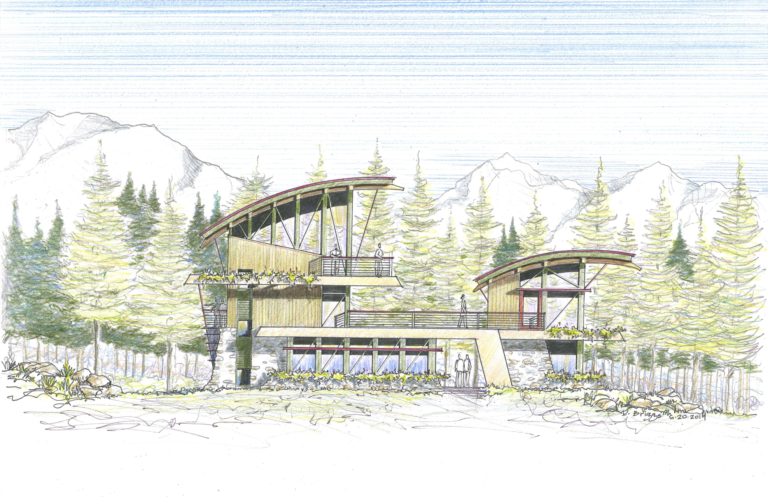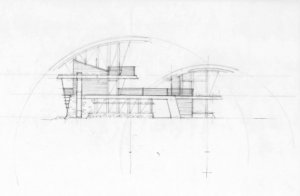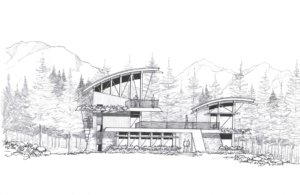
 Putting pencil to paper and designing by hand is always the first stage of the Briggs Architecture process. In this blog lead architect Don Briggs explores how “rough rendering” nourishes his creative practice and opens the door for clients to co-create spaces with their architect.
Putting pencil to paper and designing by hand is always the first stage of the Briggs Architecture process. In this blog lead architect Don Briggs explores how “rough rendering” nourishes his creative practice and opens the door for clients to co-create spaces with their architect.
Doodles, sketches and rough renderings are essential to the Briggs Architecture design process. Sketching a concept brings it to life and gives it room to breathe; it gives the artist a space to explore and to edit, to think and rethink. And it makes sharing possible – when abstract concepts come alive on the page the architect and client can visualize and create together.
In the “rough” stage our goal is not to create beautiful drawings; the purpose is to explore new ideas and communicate them to others in a fresh and accessible way. The idea, and not the sketch, is the goal. As ideas develop over time, the sketch has the freedom to evolve with them. Working with a rough sketch is like tinkering with a camera lens to bring a blurry, indistinct image into sharp focus.
We also love sketching because it’s spontaneous and quick, matching the pace of ideas as they come. Ideas arrive quickly and can be just as quickly lost if not recorded by a simple sketch in real time.
 Just as sketching can make an idea come to life, putting an idea on paper can also expose its flaws. But this is a critical step that leads to better solutions and often sparks new ideas, often tangential from the original. Doodles are a non-committal means to quickly explore many facets of a problem and solutions, from the sober to the off-the-wall or ridiculous. Frequently, the “ridiculous” idea has value – maybe one facet of a crazy concept hides a germ of truth about the problem that can grow into a realistic solution.
Just as sketching can make an idea come to life, putting an idea on paper can also expose its flaws. But this is a critical step that leads to better solutions and often sparks new ideas, often tangential from the original. Doodles are a non-committal means to quickly explore many facets of a problem and solutions, from the sober to the off-the-wall or ridiculous. Frequently, the “ridiculous” idea has value – maybe one facet of a crazy concept hides a germ of truth about the problem that can grow into a realistic solution.
Because they are quick and exploratory, we often use rough renderings in a co-creation process with our clients. Sketching gets us on the “same page” and allows instantaneous feedback. The drawings become a visual dialogue between the client and architect as we work together on bringing an idea into focus.
 In my practice at Briggs Architecture I strive to approach projects with a sense of creative freedom and minimal preconceptions. I intently listen to my clients to understand their problems, needs and goals. Then I begin a process of doodles that are shaped by the nature of the problem and the client’s vision infused with my own. This is a free-thinking process in which anything goes and helps to define the problem and solutions holistically. Only later, as the solution takes on more focus the drawings become ever more precise and defined—but we like to take our time before letting the ink dry.
In my practice at Briggs Architecture I strive to approach projects with a sense of creative freedom and minimal preconceptions. I intently listen to my clients to understand their problems, needs and goals. Then I begin a process of doodles that are shaped by the nature of the problem and the client’s vision infused with my own. This is a free-thinking process in which anything goes and helps to define the problem and solutions holistically. Only later, as the solution takes on more focus the drawings become ever more precise and defined—but we like to take our time before letting the ink dry.
